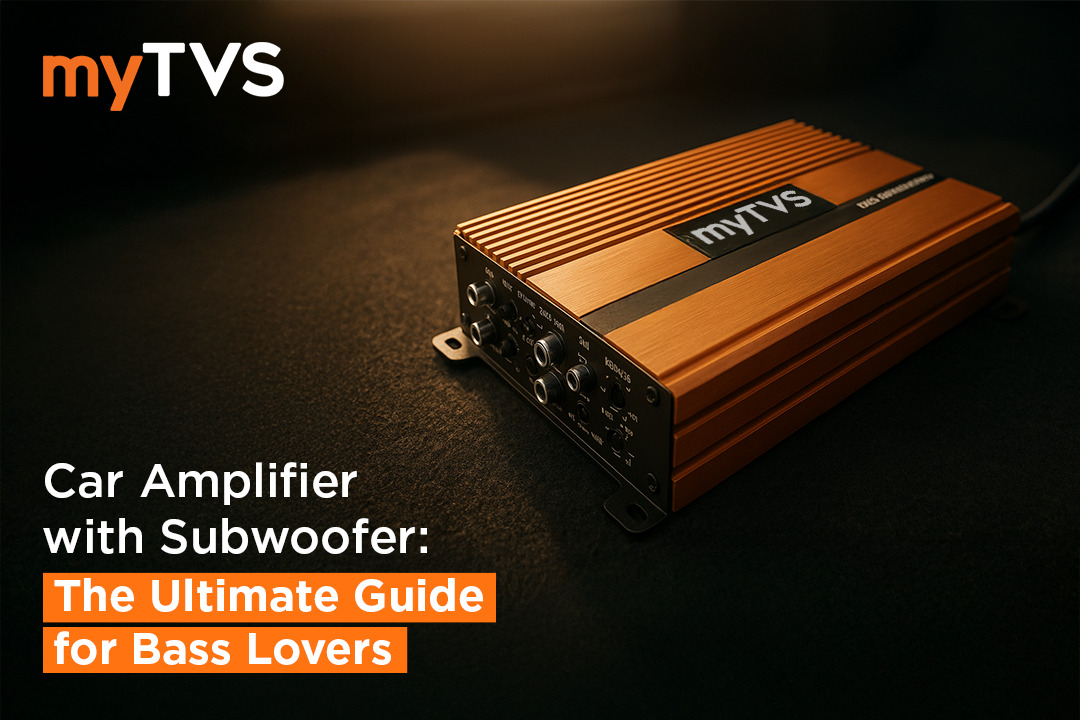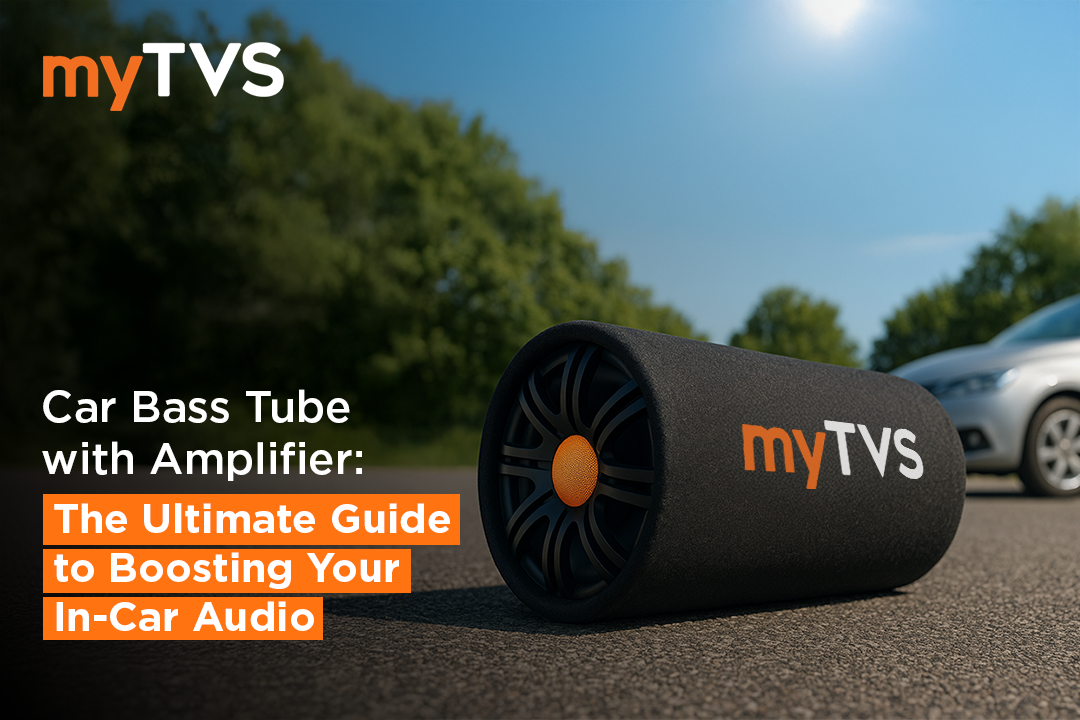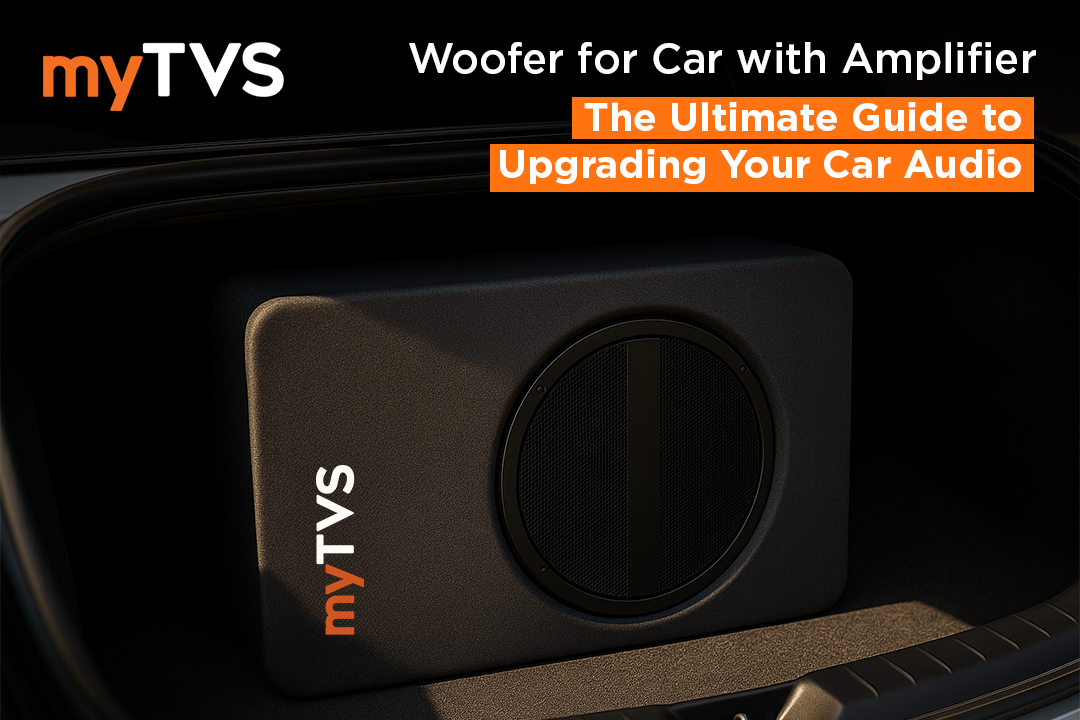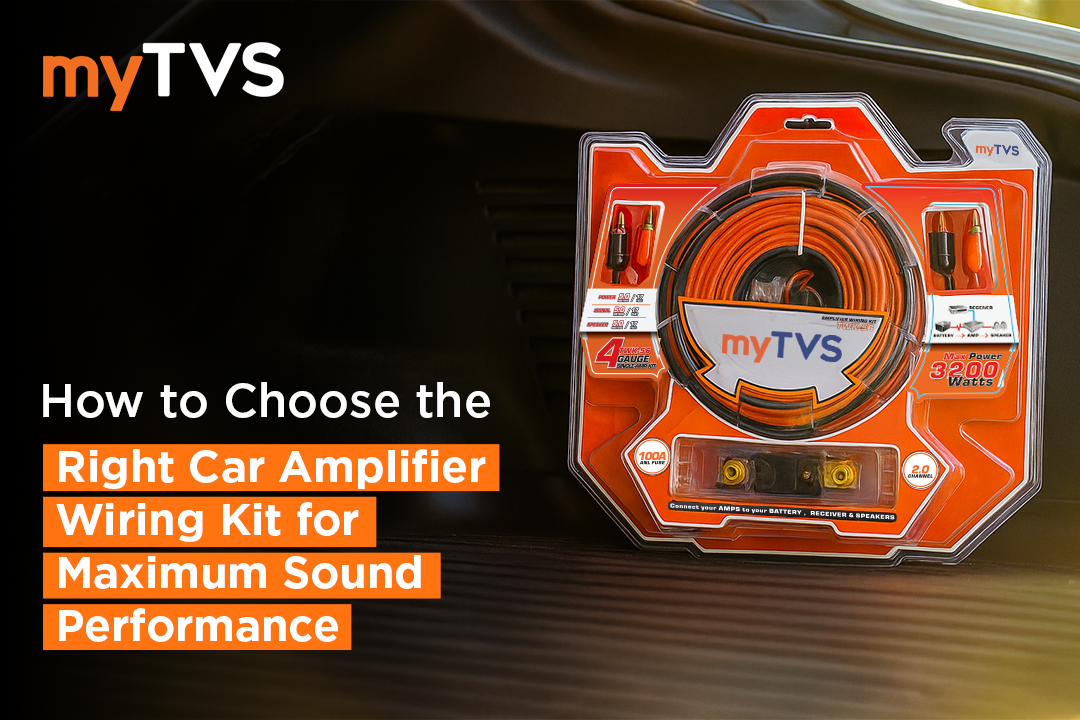If your car’s music sounds flat or gets drowned out by road noise, installing a car amplifier is the simplest way to upgrade your driving experience. A car amplifier helps deliver clear, powerful sound by boosting the audio signal from your head unit to your speakers and subwoofers.
Most factory-installed audio systems are limited in power and performance. They lack the output to properly drive high-quality speakers or subwoofers. A good car amplifier brings your music to life, offering deeper bass, crisper highs, and more dynamic sound overall. Whether you're an audiophile or simply want a more enjoyable ride, investing in a car amplifier is a decision you won’t regret.
In this comprehensive guide, we’ll explain everything you need to know about car amplifiers, from their types and benefits to buying tips, installation, and more. Let’s get started with the basics.
What is a Car Amplifier?
A car amplifier is an external device that boosts low-level audio signals from your head unit (car stereo) and sends stronger signals to your speakers and subwoofers. Without it, your audio system can't achieve the volume, clarity, or depth that modern car audio demands.
- A car amplifier enhances the volume and clarity of music
- It ensures your speakers perform to their full potential
- It allows your system to play louder without distortion
Think of it this way: your head unit is like a brain, and the car amplifier is the muscle. Without muscle, even the best brains can’t get much done.
Why You Need a Car Amplifier
Adding a car amplifier is one of the most effective upgrades you can make to your vehicle’s sound system. Even if you're not a hardcore audio enthusiast, you’ll notice the difference immediately.
Here’s why a car amplifier is essential:
- It gives your music more volume and power without distortion
- It allows aftermarket speakers and subwoofers to perform as designed
- It eliminates common problems like weak bass and muddled vocals
- It helps overcome background noise from engines, roads, and traffic
- It creates a cleaner, more immersive soundstage
Whether you're listening to jazz, hip-hop, podcasts, or EDM, a car amplifier makes every note sharper and more satisfying.
Types of Car Amplifiers
Choosing the right car amplifier depends on your speaker configuration, subwoofer setup, and overall audio goals. Here are the common types:
- Mono Amplifiers: These are ideal for powering a single subwoofer. They deliver high power to one channel and are great for deep bass reproduction.
- 2-Channel Amplifiers: Suitable for powering two speakers or one subwoofer. They’re flexible and can be bridged for added power.
- 4-Channel Amplifiers: A popular choice for upgrading all four door speakers in a car. This type allows you to power front and rear speakers separately.
- 5-Channel Amplifiers: A convenient all-in-one solution to power four speakers and one subwoofer.
- Multi-Channel Amplifiers (6 to 8 channels): Designed for complex audio systems with additional tweeters, mid-range speakers, or multiple subs.
The type of car amplifier you need depends on the number of speakers, the size of your vehicle, and the sound experience you’re after.
Class A, AB, and D Amplifiers: What's the Difference?
Amplifiers are classified based on how they manage power and efficiency. Each class of car amplifier has unique traits:
- Class A Amplifiers: Known for high sound quality, but they are inefficient and generate a lot of heat. Rarely used in cars due to space and cooling limitations.
- Class AB Amplifiers: A balanced choice that offers great sound and moderate efficiency. They’re widely used in car audio systems for full-range sound reproduction.
- Class D Amplifiers: Very efficient, compact, and ideal for subwoofers. They use less power and run cooler, making them perfect for tight car spaces.
If you need an amplifier for bass, Class D is usually the way to go. If you care more about clarity across all frequencies, Class AB may be the better choice.
Key Specifications to Consider
When choosing a car amplifier, understanding the specs is crucial. These numbers determine how your amp will perform with your speakers or subwoofers.
- RMS Power Rating: This is the true continuous power output. Always match the amp’s RMS rating with your speaker’s RMS for optimal results.
- Peak Power: Maximum power the amp can produce in short bursts. It’s less important than RMS but useful to know.
- Number of Channels: Dictates how many speakers or subs the amp can support.
- Impedance (Ohms): Match your amplifier and speakers' impedance to avoid damaging either component.
- Signal-to-Noise Ratio (SNR): A higher SNR means clearer sound with less interference.
- Crossover Settings: Allow you to filter frequencies so that each speaker or sub only handles what it’s designed for.
- Gain Control: Helps you match the amp’s input level to the stereo’s output for clean sound.
A well-matched car amplifier leads to a sound system that works in perfect harmony.
How to Choose the Right Car Amplifier
Not every car amplifier is suitable for every vehicle or audio system. Here's how to choose the best one:
- Match RMS power ratings between the amplifier and your speakers
- Decide how many speakers and subwoofers you want to power
- Check the space available in your vehicle for mounting
- Know the impedance of your speakers (usually 2 or 4 ohms)
- Think about future upgrades — a slightly more powerful amp allows for growth
- Consider your budget, but don’t compromise too much on quality
Remember, even the best speakers will sound weak if they’re not powered by a capable car amplifier.
Amplifier Installation Tips
Installing a car amplifier correctly is critical to getting the best sound. Poor installation can lead to noise, overheating, or even equipment damage.
Here are some essential tips:
- Use the right power wire gauge for your amplifier’s wattage
- Secure a solid ground connection, preferably less than 18 inches from the amp
- Install a fuse near the battery to prevent electrical fires
- Mount the amp in a well-ventilated area, not under carpets or in sealed spaces
- Run RCA cables and power cables on opposite sides of the car to avoid noise
- Use high-quality connectors and cables to ensure a solid electrical signal
If you’re unsure, professional installation ensures your car amplifier performs safely and efficiently.
Troubleshooting Common Amplifier Problems
Even a good car amplifier can develop issues over time. Here’s how to identify and solve common problems:
- No sound output: Check for loose wires, blown fuses, or remote wire issues
- Distorted sound: Lower the gain, check speaker connections, or adjust the crossover
- Amplifier goes into protect mode: May be caused by overheating, wiring problems, or a blown speaker
- Whining or buzzing noise: Often a grounding issue or signal interference from poor-quality RCA cables
- Overheating: Make sure your amp has enough airflow and is not overloaded
Routine checks and careful installation will reduce the chances of these problems.
Proper Gain Setting: The Secret to Clean Sound
One of the most misunderstood settings on a car amplifier is the gain control. It’s not a volume knob — it matches your amp to the stereo’s output signal.
To set it properly:
- Turn your stereo volume to about 75% of max
- Set the amplifier gain to minimum
- Slowly increase gain until you hear slight distortion, then back it down
- Always test with real music, not just test tones
Proper gain ensures your system plays clean, distortion-free music at all volume levels.
Expert Tips to Maximize Performance
If you want your car amplifier to last and perform at its best, follow these expert tips:
- Use high-quality, shielded RCA cables for signal input
- Keep your wiring neat and secure to prevent shorts
- Use a Digital Signal Processor (DSP) for advanced sound control
- Choose amps with built-in safety features like thermal shutoff or clipping indicators
- Upgrade your vehicle's alternator or add a second battery for high-wattage systems
- Check all connections regularly to prevent signal loss or damage
Upgrade with Confidence via myTVS
Ready to transform your drive with deeper bass, cleaner highs, and more power? A high-quality car amplifier is your gateway to the ultimate in-car listening experience.
myTVS offers top-of-the-line car amplifiers, expert installation, and premium audio accessories — all backed by a trusted brand and nationwide service.
Visit myTVS now to explore car audio solutions that bring your music to life, the way it was meant to be heard.
Frequently Asked Questions
Q1. Do I really need a car amplifier for better sound?
Yes, a car amplifier dramatically improves sound clarity, volume, and bass — especially when using aftermarket speakers.
Q2. Can I power all my speakers with one amplifier?
Yes, a multi-channel car amplifier can power all your door speakers and even a subwoofer.
Q3. Will a car amplifier drain my battery?
Only if it's installed incorrectly or used at very high power levels without a capacitor or upgraded alternator.
Q4. What size car amplifier should I buy?
The amp should match your speaker’s RMS rating and impedance. Oversized amps can overpower your system.
Q5. What's the difference between RMS and peak power?
RMS is the continuous power an amp can provide. Peak is the maximum it can output in short bursts.
Q6. Why does my car amplifier keep going into protect mode?
It may be overheating or facing a wiring short. Check for ventilation, ground connection, and speaker load.
Q7. Is Class D worse than Class AB?
Not necessarily. Class D is more efficient and compact, making it great for bass or full systems in limited spaces.
Q8. Can I install a car amplifier myself?
Yes, with proper tools and knowledge. However, for clean and reliable results, professional installation is recommended.










